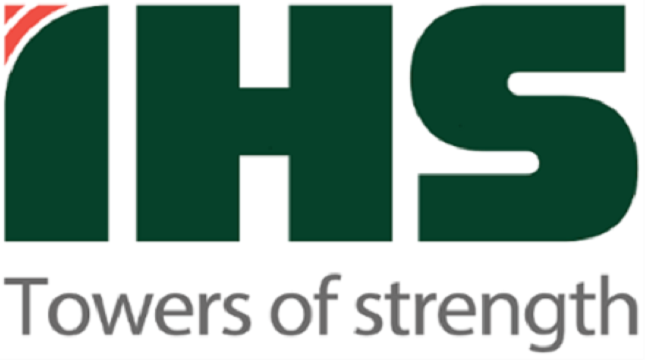News
FG Begins Implementation of Abuja Technology Park Master Plan

The Federal government yesterday said it has commenced the implementation of the Master Plan for the establishment of the SHESTCO Science and Technology Park at SHEDA in FCT, Abuja.

The minister of Science, Technology and Innovation, Sen. Adeleke Mamora disclosed this while declaring open a 2-Day Stakeholders workshop on the development and management of science and technology park and the integration of Technology Forsight for National development.
He said the Ministry has over the years embarked on national and international workshops and other advocacy programmes to sensitize and create awareness and enlightenment for stakeholders including Universities and Research Institutes across the country on the Nigerian Science and Technology Park initiative.
According to him, Science Parks have many advantages on National economies, especially as they: Stimulate and effectively manage the flow of knowledge and technology amongst universities, R&D institutions, companies and markets; facilitate the creation and growth of innovation-based companies through incubation and spin-off processes; and provision of other value-added services together with high quality space and facilities.
The minister, who was represented by the Permanent Secretary in the Ministry, Mrs. Monilola Udoh, noted that the Ministry is already partnering with institutions and development partners locally and internationally to assist in the implementation of the SHESTCO Science and Technology Park.
The organizations include; the World Technopolis Association, UNESCO, Science Parks and Government of Poland, China Great wall Industry, United Kingdom Science Park Association (UKSPA) etc.
He listed some of the achievements of the initiative as; the production of feasibility report and business plan by UNESCO and the production of Master Plan for the project which is being implemented, saying that the park, when completed would spur Nigeria into industrialization.
Mamora described as welcome development the collaboration between the Ministry and some Agencies and Universities such as the Project Development Institute (PRODA), University of Nigeria Nsukka (UNN) which already has a functional Science Park and some State Governments that have indicated interest in establishing their own Science Parks in a manner that will be mutual beneficial.
”The Federal Government has mandated the Ministry to establish, promote and facilitate the establishment of Science and Technology Parks in Nigeria for Nigeria’s sustainable Development.
‘‘On the other hand, Technology Foresight which is also the other area to be discussed at this workshop, provides a frame work to think about the possible future in a structured and constructive way.
Technology Foresight is not about predicting a predetermined future, but about exploring how the future might evolve in different ways, depending on the actions and decisions taken today.
‘‘The Technology Foresight initiative also provides suitable methodologies to promote sustainable and innovative development, fostering economic, environmental and social benefits at national and regional levels.
Its outcomes are policies and programmes that deal with innovation, industrial growth and competitiveness. Nigeria therefore must embrace Technology Foresight for policy and planning and ultimately for the socio-economic development of the country.
‘‘Permit me to say that the involvement of the private sector is necessary in the Science Park project which is based on the triple Hellx Model of the Government, Academia and the Industry.
“Because of dwindling resources, Nigeria, just like other countries is leveraging on the expertise and financial resources of the Private Sector for the implementation of the Science Park and other projects through Public Private Partnership (PPP). The Ministry has several flagship programmes including the Science Park which are earmarked for PPP.’’
He however, re-iterated the resolve of the Federal to promote the evolution of Innovative technologies that would help reduce import dependence, enhance local content and strengthen self-sufficiency in our productive capacities, especially as a nation desirous of creating jobs, reducing poverty and strengthening her economy.
He further charged participants to brainstorm exhaustively and chart the best way for the implementation of the SHESTCO Science and Technology Park Master Plan and of course the of Science Parks in Nigeria, and also how to leverage on Technology Foresight for Planning and Policy formulation as well as Resource Persons.
Earlier in her welcome address, Mrs. Monilola Udoh, the Permanenent Secretary, said the absence of linkage among the stakeholders have adversely affected the development of indigenous technology transfer and had encouraged undue reliance on foreign technical assistance.
While calling for synergy in fast-tracking the development of the park, the PS said other fast developing Nations such as China, Singapore, Korea, Malaysia etc, realized how the development and effective management of Science Parks could transform underdeveloped country to a developed one and hence, decided to develop Science and Technology Parks with spin-off companies running into hundreds and employing thousands of their citizens,
According to her, the role of the ministry is to provide the general leadership and guidance in the implementation of the project alongside with other relevant agencies in handling policy issues and funding for the project; the Research Institutes are to provide the R&D results for commercialization, while Universities and other tertiary institutions are to provide the skilled man power for the SHESTCO S&T Park.
In his goodwill message, the Director General of SHETSCO, Prof. Peter Onyenekwe said the Silicon Valley project of the ministry recognizes the importance of increasing and strengthening the linkage between Nigeria’s government, knowledge/research centres and industry.
As an institute, he said the complex hopes for the S&T park to create a focal point for the building critical mass for infrastructure and expertise that would catalyze and fast-track the commercialization of existing and emerging technologies and research output; foster a robust system of innovation through effective interaction among government, knowledge centre and industry in a corridor of technology that stretches from SHEDA to all part of the country and apart from the initial take off grant, the project should be self-sustaining.
‘‘The increased interest in the development of science and technology Parks globally is related to the need to foster a viable innovation led sector as well as the need for a robust research and development base, using indigenous human capital and associated commercialization of technology to accelerate economic development,’’ he said.
News
IHS Nigeria, UNICEF Donate Oxygen Plant to Bridge Health Gap in River State

IHS Nigeria and its implementing partner, the United Nations Child Education Fund (UNICEF) has expressed satisfaction that the Oxygen Plant recently donated to Rivers State is helping to bridge the health Gap in the state and its environs.

This observation was made recently when officials from IHS Nigeria and UNICEF, carried out a project inspection visit to the plant located at the General Hospital in Eleme, Rivers State.
During the handing over of the oxygen plant to the Rivers State Government in 2024, the facility was reported to have a production capacity of 123 oxygen cylinders and 720,000 litres of oxygen every 24 hours.
The plant was built under a Public-Private Partnership involving UNICEF, the Canadian Government, IHS Nigeria, in partnership with the Rivers State Ministry of Health through the State Hospital Management Board.
Speaking during the visit to the facility yesterday, the Director of Sustainability at IHS Nigeria, Titilope Oguntuga, noted that the oxygen plant has saved lives and is helping to bridge health gaps in the eight other states where similar plants are located.
She further explained that the visit reflects the organisation’s commitment “not only to create opportunities for impact but to also continue supporting the healthcare industry by carrying out such interventions that directly impact individuals and saves lives. This plant is one of the nine oxygen plants we have built across the federation,” she said.
“We are particularly excited that it is helping to bridge health gaps—not just in Rivers State and its environs, but in all the states where the plants are currently located.”
Oguntuga informed that in terms of sustainability “we focus our intervention sustainability on four pillars; ethics and governance, education and economic growth, environment and climate change and finally, people and communities”.
She added that “the visit to the Rivers State oxygen plant is to have an assessment of how well the plant is functioning, the impact it is currently making and to generally understand how the operation is going”.
On his part, Chief of UNICEF Field Office, Port Harcourt, Dr Anslem Audu, stated that the plant has been very functional and useful to the people of Rivers State. According to him, “During the COVID-19 pandemic, a lot of patients needed oxygen and oxygen was not available. So many children will come down with pneumonia and it will become an emergency, they will need oxygen, but oxygen is not available in the hospital. But with this plant now available no child will die because of lack of oxygen in the hospital. The era of lack of oxygen is no longer there.
Audu added that “You can practically visit any of the hospitals in Port Harcourt and find out that they have oxygen and the product is from this plant all thanks to IHS Nigeria, the Canadian Government and UNICEF”.
The UNICEF field officer, who confirmed that the plant is functioning optimally, said it is producing enough oxygen for the state’s needs.
In his words, “The partnership between these three organizations and the Ministry of Health in Rivers State has really worked, and we are reaping the benefits of the partnership.
He urged the implementing partners, especially the government, to also invest in the sustainability of the facility by providing a source of electricity for the plant to be more functional.
Earlier, the Medical Director Eleme General Hospital, Dr Leechi-Okere Clarabelle, noted that since the day of the unveiling, the plant has been functioning very well. Commenting on impact he noted that “We’ve had success stories whereby oxygen is distributed to public hospitals in the state, including the two teaching hospitals in the state and then we have also extended distribution to some private hospitals within the state.
“We have two hubs that serve as storage and distribution points because of the location of the plant. We produce here and store somewhere in Port Harcourt so that people who come from a far distance can get oxygen from these hubs.
News
JAMB Accuses Student of Securing Admission through Identity Fraud

Joint Admissions and Matriculation Board (JAMB) has accused a 2025 Unified Tertiary Matriculation Examination (UTME) candidate of manipulating his identity and engaging in online blackmail.

Fabian Benjamin, head of public affairs, JAMB, issued a statement on the matter on Thursday.
He said one Chinedu Okeke, currently a 400-level Medicine and Surgery student at the University of Nigeria, Nsukka (UNN), gained admission in 2021 while claiming to be from Amuwo-Odofin, Lagos state.
JAMB said Okeke’s national identification number (NIN) records from 2021 confirm his Lagos origin.
The board stated it does not alter candidate information provided through NIN.
The board, however, said the 400-level student, who is facing potential challenges for incorrect credentials, is now claiming that it retrieved the wrong details for him from the National Identity Management Commission (NIMC) in 2021.
“[This] is unequivocally false, aimed at fabricating a defence for his case,” Benjamin said.
“The evidence suggests that Chinedu altered his records as filled in 2021 before registering for the 2025 UTME, a fact confirmed by even his advocates.”
The board questioned why a 400-level medical student would seek to study mechanical engineering in 2025, especially with “inconsistencies in his claims.”
JAMB alleged that Okeke “took advantage” of Lagos state’s quota in 2021, thereby obstructing the admission opportunities for other deserving candidates from the state.
It added that he then “attempted to manipulate his details with the NIMC” to unjustly claim representation from Anambra state in 2025.
The board criticised “online advocates” for “actively reaching out to Chinedu’s parents to extract emotional narratives rather than factual clarifications, neglecting to seek information directly from the university.”
JAMB affirmed its commitment to maintaining accurate records and preventing candidates from exploiting loopholes.
It warned that if UNN confirms any inconsistencies, it would notify the Medical and Dental Council to consider delisting Okeke.
“When a nation trivialises illegalities, it breeds a future fraught with potential criminality,” Benjamin’s statement concluded.
News
Check Point Report Finds Africa as Top Target for Cyber-attacks

Africa has become the most targeted region globally for cyber-attacks in the first quarter of 2025, according to new research from Check Point Software Technologies. The company’s Q1 2025 Global Cyber Attack Report reveals a steep rise in malicious activity as the continent continues to accelerate its Digital transformation.

Ethiopia emerged as the most targeted country in Africa during the reporting period. FakeUpdates ranked as the most common malware, while 80% of malicious files across the continent were delivered via e-mail. In contrast, 62% of threats in SA were distributed via the web.
On average, organisations in Africa faced 3 325 cyber-attacks per week – a staggering 72% above the global average of 1 938 attacks per organisation.
Check Point Software unpacked the findings at a media roundtable in Johannesburg. Eli Smadja, global research group manager at Check Point, provided a detailed overview of Africa’s evolving cyber threat landscape, which he said is increasingly defined by AI-powered threats, ransomware, infostealers, edge device vulnerabilities and cloud-based risks.
Among the most concerning developments was the discovery of a previously undocumented multi-stage backdoor, dubbed Stealth Soldier, currently being deployed in cyber operations targeting North African government entities. The malware forms part of a broader command-and-control infrastructure used in spear-phishing campaigns.
Smadja noted a growing trend in malware designed to bypass AI detection systems.
“These aren’t aimed at advanced large language models (LLMs), but rather at lower-level ones,” he said. “It’s about LLM evasion – fooling the AI and manipulating prompts.”
Despite the increasing use of AI in cyber security, Smadja cautioned against over-reliance on AI-driven defence systems. “AI still requires human prompting.”
Check Point is advocating for a zero trust model and a holistic, automated and consolidated approach to cyber security. This includes centralised threat visibility and simplified controls to protect against ransomware, phishing, data theft and vulnerabilities at the edge.
“Just having something at the perimeter isn’t enough,” Smadja said. “Cyber-attacks are not just targeting PCs or servers anymore. For instance, we’ve seen state-sponsored attacks aimed at fuel pumps to disrupt national supply chains.”
He highlighted the importance of understanding external risk – threats originating outside the organisation – especially as AI-driven ransomware and attacks on third-party service providers continue to rise.
“Printers, for example, are a major attack vector,” he added. “They’re often network-connected, and threat actors can exploit them to gain broader access.”
Credentials, Smadja noted, are also a lucrative commodity on the dark web, often selling for around $500.

 News3 days ago
News3 days agoJAMB Accuses Student of Securing Admission through Identity Fraud

 News3 days ago
News3 days agoCheck Point Report Finds Africa as Top Target for Cyber-attacks

 E-Financial3 days ago
E-Financial3 days agoEFCC Recovers Funds Lost to CBEX Fraud

 Telecom2 days ago
Telecom2 days agoNCC Speaks of Plans to Secure Telecom Infrastructure Nationwide

 General News2 days ago
General News2 days agoAirtel Nigeria Drives BFSI and Utility Sector Innovation with Industry-wide Workshop

 Telecom2 days ago
Telecom2 days agoAfrica’s Lawmakers Commit to Strengthening AI, Digital Health and Smart Manufacturing Frameworks

 E-Financial3 days ago
E-Financial3 days agoFinancial Fraud in Nigeria Surges by 45 Percent, 70 Percent of Losses Linked to Digital Platforms – CBN

 E-Financial2 days ago
E-Financial2 days agoUBA Expands to More African Cities, Stamps Footprint in Saudi Arabia
























